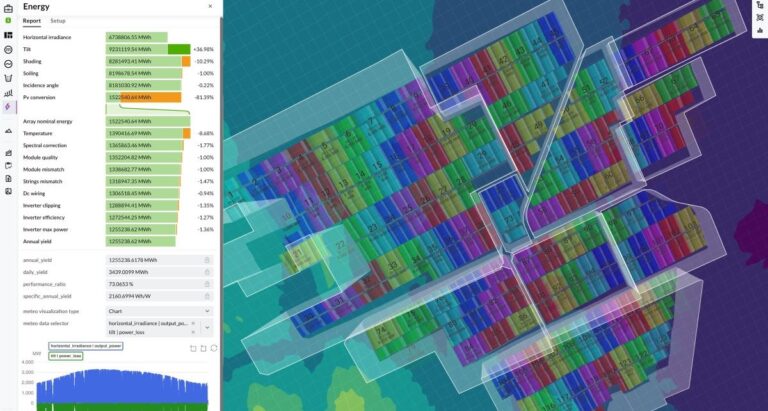US-based PVFarm has released an early web-based application for large-scale solar PV project planning. It includes real-time energy models and BIM (Building Information Model) functions, which are said to support the electrical, mechanical, civil, energy and procurement aspects of PV installations.
US-based PVFarm has launched a web-based PV plant design application for professionals involved in the early stages of the design cycle of utility-scale and commercial and industrial (C&I) projects.
The subscription-based tool provides quick feedback on the implications of design decisions about layouts, equipment, grading and electrical systems at the beginning of the project workflow. “It is a crucial phase of the project with a lasting impact. Decisions have a thirty-year tail,” said Maksim Markevich, head of technology at PVFarm pv magazine. “We are currently offering a paid product license following a co-pilot trial where we work with potential users to evaluate a real project with PVFarm.”
According to the company, users can combine equipment and electrical designs, or apply different assessment strategies across an entire site or per field. Layouts can be edited multiple times. Advanced algorithms help to quickly identify the most efficient options.
“The application took three years. Our team has eight years of experience developing design automation software for other industries,” said Markevich.
The application is suitable for fixed ground-mounted or single-axis tracking installations and is said to support financial, energy performance, electrical, civil, mechanical and procurement aspects. It has a Building Information Model (BIM) functionality for modeling and provides information about objects to team members for analysis, exploration or comparisons.
Multiple file formats are supported and there is compatibility with other tools such as Autodesk and PvSyst. “By bringing all these aspects together into one platform, PVFarm enables users to evaluate opportunities and trade-offs holistically, ensuring informed decision-making,” said Markevich.
“The application took three years. Our team has eight years of experience developing design automation software for other industries,” said Markevich.
This content is copyrighted and may not be reused. If you would like to collaborate with us and reuse some of our content, please contact: editors@pv-magazine.com.


